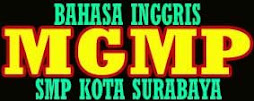1. The skin _____ body's heaviest organ.
A. of the human
B. of humanity
C. on a human's
D. is the human
2. _____ of the space shuttle Columbia began on April 12, 1981.
A. The flight was first
B. The first flight
C. For the first flight
D. On the first flight to be
3. _____ has more than 650 muscles.
A. The human body
B. The body is human
C. For the human body
D. In the body of a human
4. The ancestors of _____ lived on land.
A. once whales and dolphins were
B. whales and dolphins once
C. whales and dolphins were once
D. from whales and dolphins once
5. _____ life on Earth for three billion years.
A. Algae dominated
B. The domination of algae
C. Dominant algae
D. Algae dominating
6. _____ for Coca-Cola is in a safe-deposit vault at the Trust Company of Georgia.
A. The recipe was secret
B. The secret recipe was
C. In the secret recipe
D. The secret recipe
7. The sunflower will _____ from east to west to follow the sun.
A. its head turns
B. turn~ its head
C. the turn of its head
D. its head turning
8. The chief _____ atmosphere are nitrogen and oxygen.
A. gases were in the
B. gases in the
C. gases were the
D. were gases in the
9. _____ from the University of South Alabama in 1994, at the age of 10.
A. Michael Kearney's graduation
B. The graduation of Michael Kearney
C. Graduate Michael Kearney
D. Michael Kearney graduated
10. The largest bone in _____ the thigh bone, or femur.
A. the human body
B. it the human body
C. the ~human body is
D. the human body to be
11. Steven Spielberg _____ at the age of 13 for a 40-minute war film.
A. won~ a contest
B. a winning contestant
C. the contest was won
D. a winner of the contest
12. _____ out of four million Irish at the time of the 1840s potato famine came to the United States.
A. One million were
B. For one million to be
C. One million
D. For one million
13. _____ has the lowest freezing point of any metal.
- Mercury is the one
- On Mercury
- It is Mercury
- Mercury
A. is fixed daily
B. a day to be fixed
C. a day is fixed
D. a daily fixation
15. Approximately two and a half million _____ living in colonial America by the middle of the eighteenth century.
A. people
B. people were
C. people inhabited
D. in people were
16. _____ in the world, with over 4,300 hours of sunshine per year, is the eastern Sahara.
A. The place is sunny
B. Of the sunniest places
C. The sunniest place
D. Sunny places are
17. _____ the result of thermonuclear fusion reactions deep within the sun.
A. Solar energy
B. The energy of the sun
C. In solar energy is
D. Solar energy is
18. The oldest known _____ existence were made on a clay tablet in Babylon in about 3000 B.C.
A. maps in
B. maps
C. maps were in
D. in maps were
19. Aerospace telemetry _____ the 1930s with the development of the balloon-borne radiosonde.
A. a date in
B. dating
C. dates from
D. the date of
20. _____ of mapped passages in Mammoth Cave in Kentucky make it the world's longest known cave network.
A. The 300-mile length
B. It is 300 miles long
C. The 300-mile length is
D. Because of the 300-mile length




